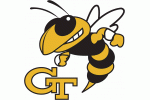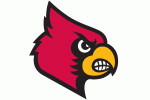There are very few, if any, who will argue that the sum total of last 10 seasons under Roy Williams has been anything less than great. Yes, there have been down moments, but two Titles, three Final 4s, and six Elite 8s over a ten-(really eight)-year span is something that had never been done previously at UNC. And yet, there is a contingent who will argue that there are things that UNC/Roy could change that would promise an even greater level of success. One of those complaints that comes most often, usually in connection with a loss, is that UNC/Roy don't guard the three, and if they did, they would win at a significantly greater rate.
To address the first part of this, while I won't go so far as to say that UNC "doesn't guard the three," it is inarguable that, in comparison to the rest of the NCAA, UNC does allow a large percentage of thee-point attempts. The Tar Heels have ranked in the top half of the NCAA in 3PA/FGA percentage in only three of Roy's first ten seasons, and in five of them, they have been in the bottom third. So maybe there is something to this. Clearly, yielding that many 3PA can't be beneficial; while the success rate associated with each attempt may be lower, the 50% increase in points gained per make should still lead to a significant drop in net defensive efficiency for UNC. So to determine whether this is true, and if so, to what magnitude it impacts the Heels, I have calculated the number of points UNC would have given up per game in each of the last 10 seasons if they were to increase their perimeter focus to raise their overall rank in 3PA/FGA percentage. Shown in the table below are the results of these calculations, displayed in a format that describes the change in points per game that UNC would yield if they improved their rank in 3PA/FGA allowed to 150th down to 1st.
| UNC's change in PPG if rank in 3PA/FGA was: | |||||
|---|---|---|---|---|---|
| Season | 1st | 25th | 50th | 100th | 150th |
| 2004 | -0.48 | -0.34 | -0.29 | -0.20 | -0.14 |
| 2005 | -1.44 | -0.81 | -0.70 | -0.50 | -0.38 |
| 2006 | -0.61 | -0.24 | -0.16 | -0.04 | n/a |
| 2007 | -0.57 | -0.25 | -0.16 | -0.03 | n/a |
| 2008 | -0.13 | -0.08 | -0.05 | -0.03 | -0.01 |
| 2009 | -0.62 | -0.36 | -0.29 | -0.17 | -0.05 |
| 2010 | -0.99 | -0.65 | -0.51 | -0.35 | -0.24 |
| 2011 | -0.84 | -0.47 | -0.37 | -0.24 | -0.16 |
| 2012 | -0.66 | -0.46 | -0.37 | -0.26 | -0.18 |
| 2013 | -0.67 | -0.43 | -0.27 | -0.14 | n/a |
Looking at these numbers, what stands out the most is that the change in points per game that UNC would allow if they guarded the three more aggressively is really small. Save for one season (2005), UNC not being the best in the country in 3PA/FGA percentage allowed costs the Heels less than 1 PPG: and the 2005 numbers are somewhat skewed by the fact that UNC gave up a ton of threes, and Duke gave up an unusually low percentage. (By the way, how did that season turn out for those teams?) So in general, making a significant change in philosophy to bring them consistently into the top 50 would result in the Tar Heels giving up approximately 12-15 points less, per season.
So despite the fact that the change in points allowed appears to be very small, it still does look like it would be something that would benefit the Tar Heels. However, that doesn't necessarily mean that there should be a change in the philosophy with which Roy Williams and the Tar Heels approach defending their opponents, as there are a number of other factors that are not accounted for by the aforementioned calculations.
First, given that we are looking at what would amount to a 12-15 point swing per season, one must take into account the potential, and probable likelihood, that said point differential is/was the result of a small number of games. In that case, it can be inferred that in the vast majority of UNC's contests over the last 10 seasons, they have greatly benefited from their "inability to guard the 3."
The second point that needs to be considered is that forcing an opponent to take more 2-point field goals will invariably lead to an increase in the FTR that UNC allows. UNC has historically been very strong in this regard, and under Roy Williams the trend has absolutely continued, as the Tar Heels have been ranked in the top 25 in FTR allowed each of the last 8 seasons (cue howling from Raleigh). This represents a tremendous advantage to the team, as based on the national average of 69% from the free-throw line, it would only take 1.5 free-throws to yield more points (1.035) than the 1.008 points per 3-point attempt that UNC has given up over the last 10 years. And this doesn't even account for the minutes that may be lost by UNC's best players due to foul trouble.
The last point that I would make is that despite the concern that the 3-point shot has become a much more consistent shot nationwide, it is inarguable that it is still missed a great deal more than are 2-point field goals (over the last 10 years, UNC opponents have shot 45% from inside the arc, and 33% from behind it). These extra misses, because of UNC's perennial excellence on the defensive boards, are a significant reason why UNC has never ranked below 27th in adjusted tempo with Roy Williams at the helm. [For reference, the myth that rebounds off of three-point attempts favor the offensive team is properly debunked in Dean Oliver's excellent book, "Basketball on Paper."] In general, the more possessions there are in a game, the more it favors the more efficient, and usually, more talented team; but this is especially true for teams coached by Roy Williams, for whom no pace is too fast. And the results bear this out, as over the previous 10 seasons, UNC is an astounding 58-8 (0.879) in games that have had at least 80 possessions.
So what does all of this mean? In short, the calculations and their output described herein show that the damage that opponent's threes inflict on UNC is not as dramatic as some may feel, and that significantly changing the teams' defensive philosophy may do more harm than good. Does it end the discussion? I certainly hope not; but it does mean that simply stating "3 is greater than 2" and being done with it is no longer a valid argument.
[Note: I look forward to hearing if there are things that I have missed/overlooked, or areas that should be explored in greater depth. Research is only truly effective if it is an iterative process.]



















